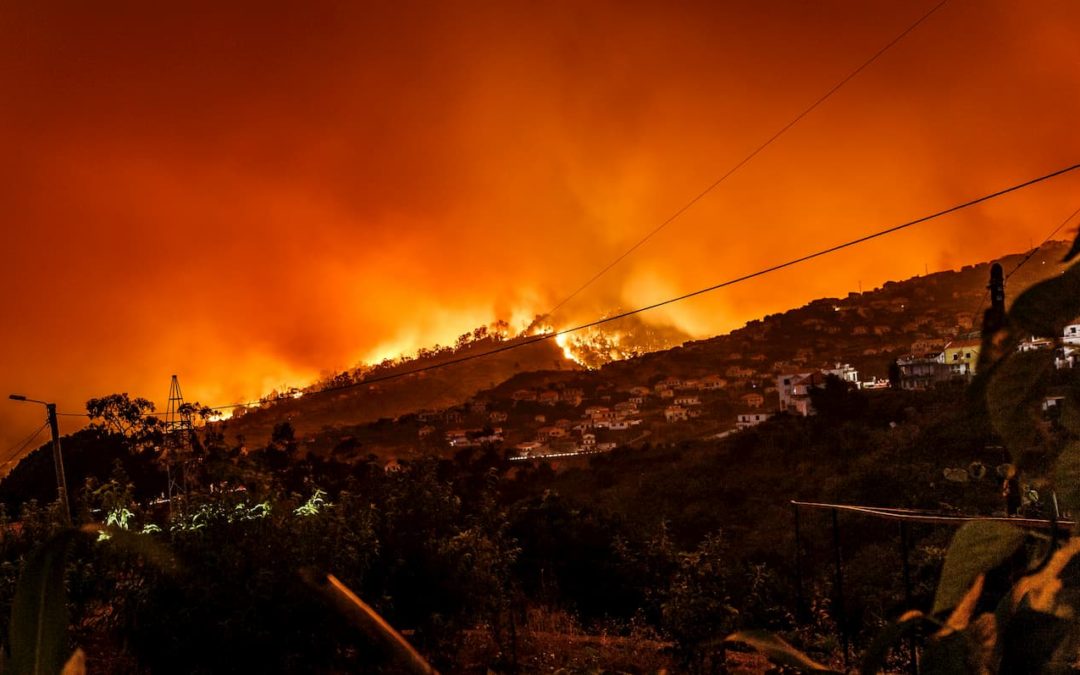Many Oregon residents are currently living under threat of major wildfires burning nearby. While these natural disasters have long been a challenge in the West, outside of California, it’s unusual for them to burn so near to the suburbs. This unprecedented situation has put wildfire preparedness in the minds of many Pacific Northwest residents who previously thought it was only a rural concern.
In a recent post, we spoke with Farmers Insurance agent Matt Elliott about binding restrictions some providers have put in place that could prevent some residents from obtaining coverage. In this post, we’ll review a few concrete steps homeowners can take to protect their homes from these destructive events.
Start with the Roof
Flying embers are one a wildfire’s largest threats. Strongs winds can carry a single piece of burning material for miles, threatening homes that seem to be outside the danger zone. As you begin hardening your property, it’s crucial to start with the roof. Because it covers such a large surface area, your roof can catch burning embers, which could spark a larger blaze. According to CalFire, wood or shingle roofs are at the most significant risk from wildfire. So if you’re building or re-roofing your home, you should choose composition, metal, tile, or other fire-resistant materials.
Stop Flying Embers
These burning embers can also threaten other parts of your home. To keep them from entering vents, homeowners should cover all openings with 1/16-inch to 1/8-inch metal mesh. CalFire also recommends covering vents in eaves or cornices with baffles. It’s also critical to remove flammable material stored underneath wooden decks and cover any openings with metal mesh, as these could serve as potent ignition sources for burning embers.
Upgrade Your Windows and Siding
The heat from a wildfire can be so intense that it can cause windows to break, even before a fire reaches the home. Broken windows allow burning embers to enter the home unabated. Fire experts recommend upgrading to double-paned windows with one pane made of tempered glass to reduce the chance of breaking. Another option is to install fire-resistant shutters you can close if a fire approaches. Much like your roof, wood or single siding will also not stand up well against fire. You should instead choose ignition-resistant material like stucco, fiber cement wall siding, or treated timber.
Create a Defensible Space
Of course, these measures will be useless if a wildfire overtakes your home. However, property owners can maintain their land in specific ways to keep wildfires from burning too close. This begins by creating defensible spaces around your home, which break down into three different zones.
0 – 5 Feet
This area is closest to your home, so you should maintain it most diligently. Start by moving all combustible fuel away from your home, along with trash and recycling bins, and always keep roofs, gutters, decks, and patios clear of dead leaves and pine needles that will burn quickly. Next, remove any tree branches that extend within this five-foot perimeter and keep all vegetation outside this inner zone. Keep your lawns well-watered, so dry grass doesn’t easily catch alight. Landscaping materials here should include non-combustible material like stone or gravel.
5 – 30 Feet
This area is the intermediate zone and could include decks, outbuildings, or other structures. Keep these areas fire-safe by removing dead vegetation from roofs and gutters, and cutting back tree branches that hang overhead. You should also relocate wood piles into zone two, at least 30 feet away from other structures. Trim trees regularly and try to keep branches at least 10 feet away from other trees.
30 – 100 Feet
In this extended zone, you should regularly trim grass to at least four inches. You should also move propane, fuel tanks, and other flammable materials like lawn furniture at least 30 feet away from your home during wildfire activity. Regularly clear vegetation and debris like tree branches from this area to limit wildfire fuel. Depending on the terrain, your local fire department may have additional recommendations for wildfire safety.
Be Ready to Leave
Even with the most diligent preparation, a fast-moving wildfire still presents a dangerous threat. During wildfire season, homeowners should be prepared to leave at a moment’s notice. Pay attention to local news and fire officials and heed their warnings. When you have to evacuate, make sure you’ve prepared emergency kits you can grab quickly containing critical supplies like food, water, prescriptions, and essential documents. Also, keep your car’s gas tank at least half-filled at all times. If a fire is bearing down on your location, you won’t have time to stop for a fill-up before moving to safety.
We Can Help Prepare Your Home
Despite the widespread destruction, this current emergency has provided an important reminder that many of us are not immune to wildfire risk. If you’re a homeowner who’s renting a property that might be in a wildfire danger zone, it’s critical to begin your updates now. Working through the wet season can make sure your rental home is in tip-top shape when summer rolls around again. As always, Rent Portland Homes by Darla Andrew stands ready to assist our clients in these updates. If you need referrals for trusted construction or landscaping companies, we can help. Our in-house construction team can also make many improvements on their own. Please call (503) 515-3170 or send us an email through our online contact form if you’d like more information. Hopefully, the current crisis will soon pass, and we can all be more prepared for future emergencies.


Recent Comments